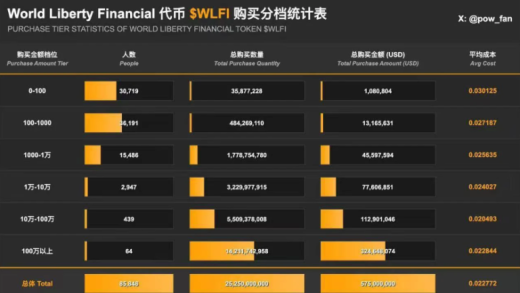The First Step in Cross – Border E – commerce Entrepreneurship: Product Selection, Website Building, or Finding Partners?
The first step in cross – border e – commerce entrepreneurship often confounds many entrepreneurs: Should they start with product selection, website building, or finding partners? This question may seem simple, but in fact, it involves the core logic of entrepreneurship and resource allocation. This article will conduct an in – depth analysis of the priorities of these three options to help entrepreneurs find the most suitable path for themselves.
Solving the Problem: The Core Logic of Cross – Border E – commerce Entrepreneurship
The essence of cross – border e – commerce is to sell products to the global market via the Internet. Therefore, the first step in entrepreneurship should revolve around “how to efficiently reach target customers and achieve profitability.” Product selection, website building, and finding partners are all means to achieve this goal, but their priorities depend on the entrepreneur’s resources, capabilities, and market positioning.
1. Product selection is the core
Without suitable products, no matter how good the website or partners are, they cannot bring in revenue. Product selection determines market demand, the competitive environment, and profit margins.
2. Website building is a tool
A website is a platform for displaying products and completing transactions, but its value depends on the attractiveness of the products and the operational capabilities.
3. Partners are a boost
Partners can make up for the shortage of resources or capabilities, but only if the entrepreneur has a clear direction and requirements.
Therefore, product selection is the first step in cross – border e – commerce entrepreneurship, while website building and finding partners are subsequent supporting actions.
Answer: Why is product selection the first step?
1. Product selection determines market opportunities
- Market demand: Product selection should be based on the needs of the target market. For example, the European and American markets have a preference for eco – friendly products, while the Southeast Asian market pursues cost – effectiveness.
- Competition analysis: Through product selection, entrepreneurs can avoid the highly competitive “red – ocean” markets and find “blue – ocean” opportunities. For instance, some niche markets may have less competition but stable demand.
- Profit margin: When selecting products, entrepreneurs need to consider costs, selling prices, and logistics fees to ensure sufficient profit margins.
2. Product selection affects subsequent decisions
- Website style: Different products require different website designs and user experiences. For example, high – end brands need sophisticated websites, while fast – moving consumer goods may require a simple and efficient shopping process.
- Partner selection: The selection of supply – chain, logistics, and marketing partners all depends on the product characteristics. For example, fragile products need more professional logistics services.
3. The cost of validating product selection is low
Before investing a large amount of resources, entrepreneurs can validate the market acceptance of products through small – scale tests (such as Dropshipping or third – party platforms).
The Timing of Website Building and Finding Partners
1. The timing of website building
- Initial stage: Entrepreneurs can use third – party platforms (such as Amazon and eBay) to quickly test products without building their own websites.
- Growth stage: When the products have been successfully validated and brand building is needed, building an independent website (such as using Shopify) is a better choice, as it can provide higher profits and brand control.
2. The timing of finding partners
- Supply chain: After the product selection is clear, entrepreneurs need to find reliable suppliers or manufacturers.
- Logistics: Select suitable logistics partners (such as dedicated lines or overseas warehouses) according to the product characteristics.
- Marketing: When it is necessary to expand the market, entrepreneurs can seek cooperation with local marketing teams or KOLs.
A Classic Case: The Success Path of Anker
Anker is a benchmark brand in the cross – border e – commerce field, and its success path perfectly illustrates the logic of “product selection first”:
- Product selection: Anker initially chose the niche market of mobile power banks. At that time, there was a lack of cost – effective and reliable brands in the market. Through precise product selection, Anker quickly captured the market.
- Website building: After validating the products on Amazon, Anker gradually built its own independent website to strengthen its brand image.
- Partners: Anker collaborated with high – quality suppliers and logistics companies to ensure product quality and delivery efficiency.
The case of Anker shows that product selection is the first step in entrepreneurship, while website building and partners are subsequent supports.
Summary and Suggestions
-
First step: Product selection
- Research market demand and select products with potential.
- Validate the feasibility of products through small – scale tests.
-
Second step: Website building
- Rely on third – party platforms in the initial stage and build your own website later.
- The website design should match the product characteristics and brand positioning.
-
Third step: Finding partners
- Select supply – chain, logistics, and marketing partners according to product requirements.
- The core of partnering is to make up for your own weaknesses.
Suggestions for Entrepreneurs
- When resources are limited: Prioritize product selection and use third – party platforms to start quickly.
- When resources are sufficient: Product selection and website building can be advanced simultaneously, but product selection remains the core.
- Avoid mistakes: Don’t build a website just for the sake of building one, or blindly look for partners.
The first step in cross – border e – commerce entrepreneurship is product selection, as it determines the direction and feasibility of the entire project. Only when the right products are selected can subsequent website building and partners play their maximum value.




![Founder’s Q&A “[New Consumption Landscape] Pricing Power for the Youth: How to Sell “Self-inflicted Experiences” at a 300% Premium?”](https://aiwiselnk.com/wp-content/themes/dashscroll/img/thumb-medium.png)
